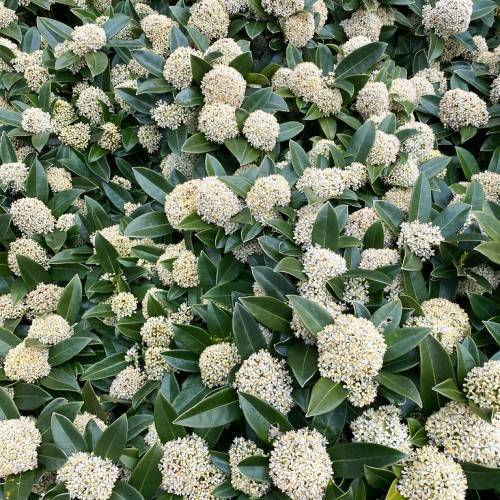
japanese skimmia
Skimmia japonica
Cycle:
Perennial
Watering:
Average
Hardiness Zone:
6 - 8
Flowers:
Flowers In Spring
Sun:
Part shade,full shade
Soil:
Acidic, Well-drained
Cones:
Yes
Leaf:
Yes
Growth Rate:
Low
Maintenance:
Low
Drought Tolerant:
Yes
Care Level:
Low
watering
Japanese skimmia should be watered regularly when the soil is dry to the touch. During the growing season (spring to summer), water the plant thoroughly once or twice a week, allowing the soil to dry until the surface is slightly dried out. During the winter months, water only when the soil feels nearly dry and reduce watering as much as possible. As the plant is drought tolerant, avoid over-watering.
sunlight
Japanese Skimmia prefers to have bright, indirect light throughout the day. It should receive at least 3 to 4 hours of sunlight each day, preferably in the morning. The plant can thrive in shady spots, making it ideal for sheltered porches and patios. Be sure to position it away from direct sunlight, which can cause burning on its delicate leaves. During the summer, it's even better to keep it in the shade to prevent scorched foliage.
pruning
Japanese Skimmia (Skimmia japonica) should be lightly pruned at the end of winter or early spring. Pruning should focus on the removal of dead, damaged, or crossing branches and should not involve removing more than 15-20 percent of the overall plant. Pruning this plant will help to maintain its natural form and may even help encourage new growth. During the growing season (spring and summer months) you can also lightly trim back branches that are too long or obstructive. Once the flowering period is over in late summer or early fall you can reduce your pruning.
